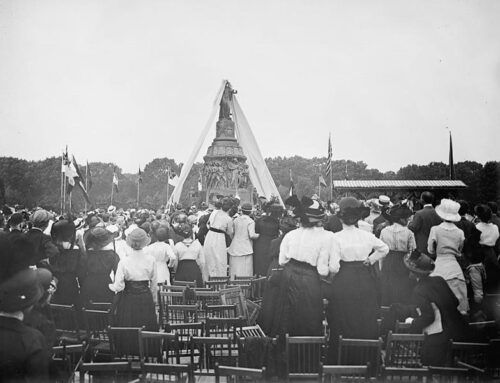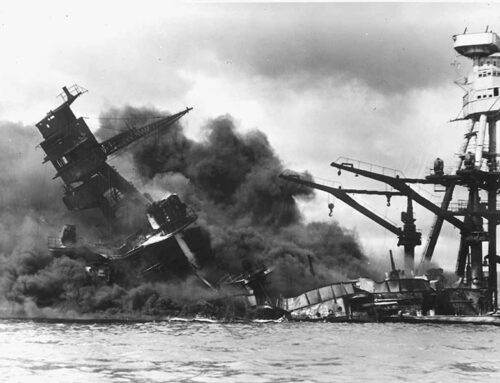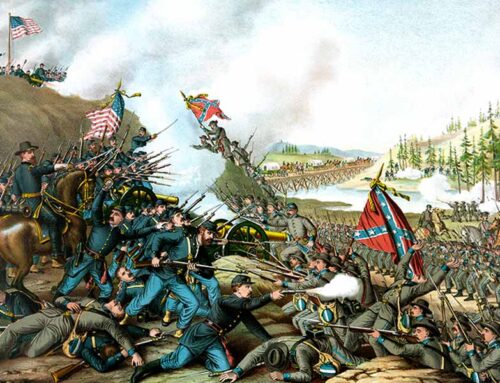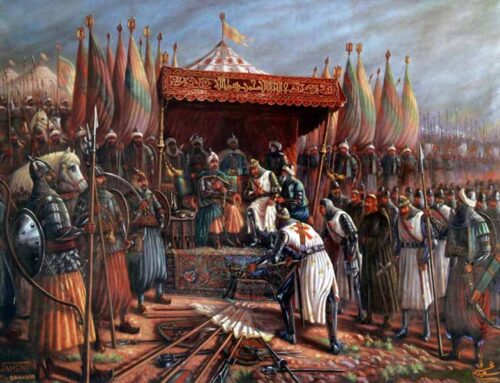ANZACs Land at Gallipoli, April 25, 1915
![]() he military campaign in Gallipoli, in 1915, is little known or remembered in the United States. The U.S. did not join the 1914-1918 War until two years later, and the geographical area of the campaign seems remote and strategically irrelevant to the war in the trenches of France. In 1981, Australian filmmaker Peter Weir released a film with the title of that battle of long ago, starring Mark Lee and Mel Gibson. Gallipoli won many awards and provided the world with a stunning reminder of the sacrifices of young Australian and New Zealand men, known as ANZACs (Australian and New Zealand Army Corps), in the First World War. The Campaign lasted eight months and cost more than a half million casualties.
he military campaign in Gallipoli, in 1915, is little known or remembered in the United States. The U.S. did not join the 1914-1918 War until two years later, and the geographical area of the campaign seems remote and strategically irrelevant to the war in the trenches of France. In 1981, Australian filmmaker Peter Weir released a film with the title of that battle of long ago, starring Mark Lee and Mel Gibson. Gallipoli won many awards and provided the world with a stunning reminder of the sacrifices of young Australian and New Zealand men, known as ANZACs (Australian and New Zealand Army Corps), in the First World War. The Campaign lasted eight months and cost more than a half million casualties.

New Zealand troops land at Anzac Cove, Gallipoli, Turkey
The war pitted the Allied nations, primarily England, France, Italy, Russia, and their respective empires against the Central Powers: Germany, Austria-Hungary, and the Ottoman Empire which included Turkey and most of the Middle East. France and Great Britain and their main opponent, Germany, settled into a complex of trenches across France and Belgium. A full year of war only brought about the digging of trenches deeper and more sophisticated, and fruitless assaults across no-man’s land. With the stalemate on the “Western Front,” the English high command—led by First Lord of the Admiralty Winston Churchill and the First Sea Lord Admiral Sir John Fisher—developed an offensive plan that would send a British fleet through the Dardenalles Straits and land an army to knock Turkey out of the war, draw Bulgaria and Greece onto the side of the Allies, and stall the Turkish offensive against Russia in the Caucasus.

Map of the Gallipoli region of Turkey, showing ANZAC Bay
The army was preparing for the spring offensives and said they couldn’t spare the men. The Navy thought they could, perhaps, attack by themselves and bombard Constantinople. None of the Allies seriously thought the Turks could withstand pressure, and that popular uprisings would finish off the Turkish government. In reality, the Turks, with German aid, had bolstered their shore artillery, trained a credible army, and sowed the sea lanes with mines. They prepared well for what the British thought would be a big surprise. The run of the British ships through the last twenty miles of the straits would have to first navigate the “Narrows,” with twenty forts, hundreds of artillery positions and strings of mines. There would be a surprise, but it would not be for the Turks. On February 19, the fleet entered the Dardenalles with guns blazing. Several French and British battleships blew up and the whole expedition withdrew. The Allied high command decided to land troops on the Gallipoli Peninsula and fight the Turkish army the old-fashioned way, setting the stage for one of the great military disasters of all time.

Landing of Australian troops at ANZAC cove, April 25, 1915
The forty-nine mile long and four mile wide Gallipoli peninsula extends along the Aegean Sea on the west, and the Dardenalles Strait to the east, on the European part of Turkey. General Kitchner appointed Sir Ian Hamilton to lead the 78,000 men of the Mediterranean Expeditionary Forces. To the Allied Army were added the Australian and New Zealand Divisions (ANZACs) currently training in Egypt. The Royal Navy Division, the 29th Infantry, and French troops were also combined, to throw 300,000 men against about 255,000 Turkish defenders. The allies underestimated the fighting qualities of the Ottoman Army since they had not fared well in earlier wars and battles, and their Empire itself was known as “the sick man of Europe.” German arms and military advisors, who became the senior officers, helped steel the Turks for the coming invasion and, in the end, repelled the Allies at enormous cost to both sides. The British took four weeks to organize a landing, giving the Ottomans plenty of time to prepare defenses on both sides of the peninsula.
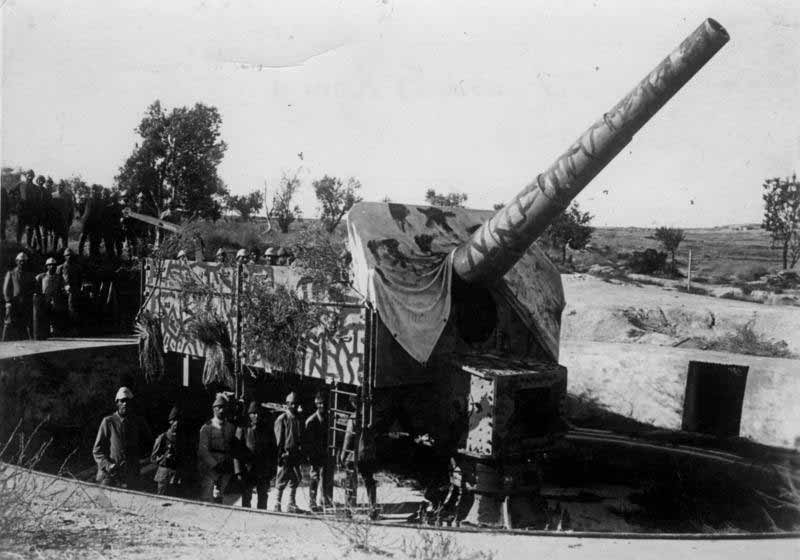
The Turks were well-armed…
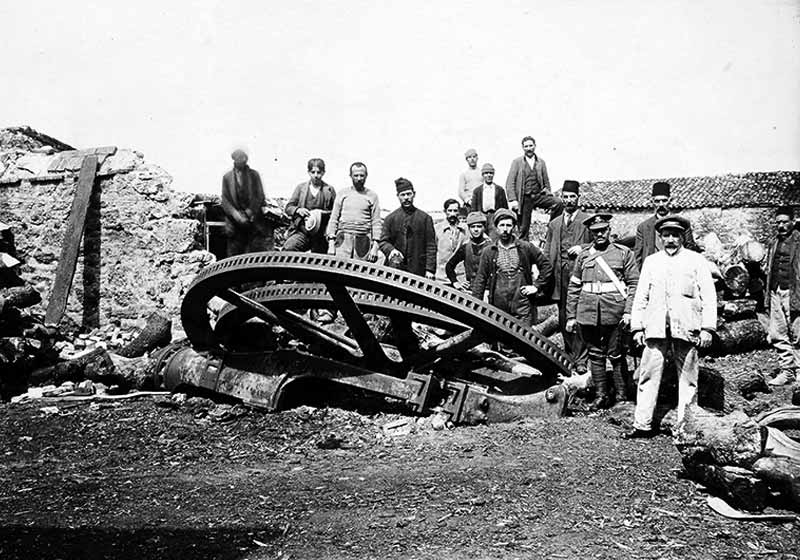
…and fortified
On April 25, 1915, the Allies landed on five beaches. The ANZAC troops landed on the Aegean side of the peninsula with the goal of advancing across the narrow peninsula and cutting off Turkish reinforcements. At 4:00 A.M. the first wave of Australians hit the beach just south of Ari Burnu, lightly defended, two miles further north than originally planned. Without accurate maps and in unknown territory, the ANZAC offensive stalled as Ottoman reinforcements were rushed to the hills above the landing zone and the defenses stiffened. The terrain was broken and cut by deep ravines. The defenders counterattacked and the ANZACs dug in after losing about 2,000 men. The other allied brigades landed at other areas around the peninsula, none of them achieving anywhere near their objectives. Ottoman reinforcements arrived at all the battlefields and the campaign settled into a battle of attrition, with attacks and counterattacks being mowed down by machine-gun fire and artillery shells.

ANZAC graves at one cemetery in Gallipoli
Australian and New Zealand troops were landed at other beaches and extended the fruitless charges against fortified positions defended by machine guns. In one massive Ottoman attack on May 18, they suffered 13,000 casualties trying to push the ANZAC troops into the sea. Over the next couple months the Allied commitment of troops increased from five divisions to fifteen and the Turks from six to sixteen. Further landings produced further failures of offensive actions for both sides as the slaughter continued unabated. As an Australian historian recorded:
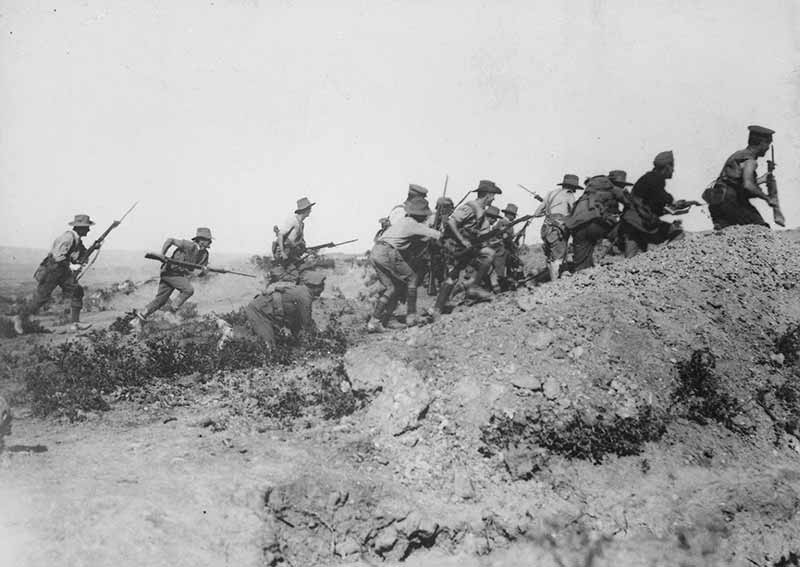
Australian troops charging an Ottoman trench, just before the evacuation at Anzac
“Conditions at Gallipoli grew worse for everyone as summer heat and poor sanitation resulted in an explosion in the fly population. Eating became extremely difficult as unburied corpses became bloated and putrid. The precarious Allied lodgements were poorly situated, which caused supply and shelter problems. A dysentery epidemic spread through the Allied trenches at Anzac and Helles, while the Ottomans also suffered heavily from disease which resulted in many deaths. . . . Autumn and winter brought relief from the heat but also led to gales, blizzards and flooding, resulting in men drowning and freezing to death, while thousands suffered frostbite.
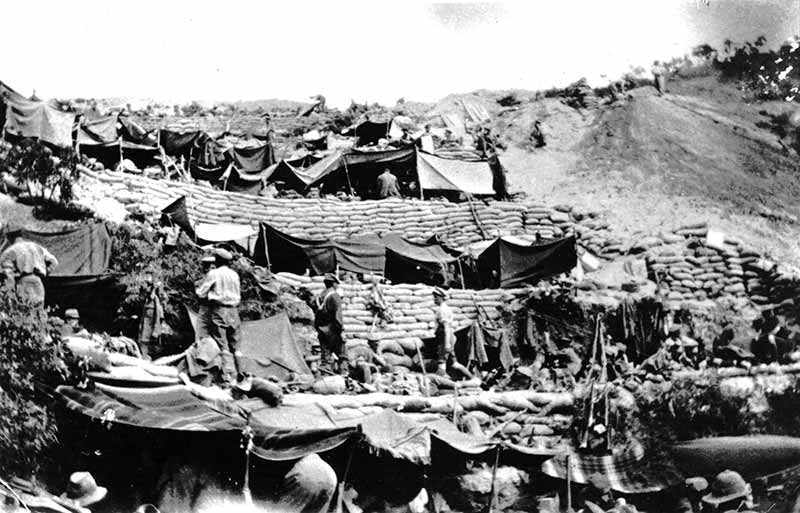
New Zealand soldiers in their ANZAC encampment in Gallipoli
The Allied armies withdrew from the precarious and deadly battlefields of Gallipoli in December and January, with minimal losses, the most successful operations of the entire campaign. In the campaign, Australia and New Zealand lost more than 35,000 men. Although representing about 20% of the total Allied losses, the percentage of men from the small populations of those two nations was so significant that few families were untouched by the Gallipoli Campaign, and to this day, May 25 is ANZAC Day in Australia and New Zealand, a remembrance of the campaign that devastated their respective countries of the English Commonwealth. Today, ANZAC tradition means “courage, endurance, and mateship.”
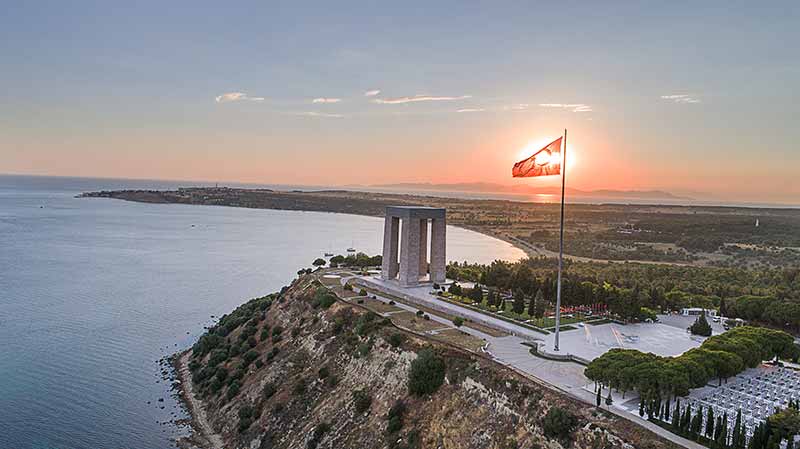
The Çanakkale Martyrs’ Memorial at Gallipoli Peninsula Historical Site, commemorating the loss of Ottoman and Anzac soldiers on the Gallipoli Peninsula
Image Credits: 1 The Landing (wikipedia.org) 2 Gallipoli Map (wikipedia.org) 3 ANZAC Cove (wikipedia.org) 4 Turkish Guns (wikipedia.org) 5 Turkish Fortifications (wikipedia.org) 6 ANZAC Cemetery (wikipedia.org) 7 ANZAC Encampment (wikipedia.org) 8 Australian Troops (wikipedia.org) 9 Memorial (wikipedia.org)



